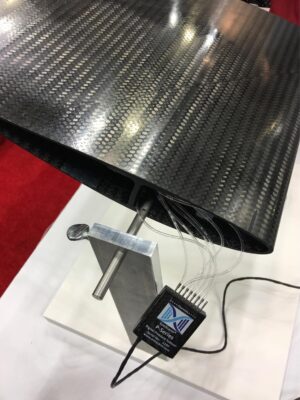It is a very slim margin between a race winning car and second place. Any race engineer in the pitlane will tell you that the difference is tiny and the most important consideration for advantage often lies in Aerodynamics. The skill in gaining downforce for corner performance with minimal cost in drag, the straight-line speed needed for the straights.
Race car aerodynamic optimisation continues to become more important in the search for performance advantage. Constrained by the increasingly restrictive rules of the sports’ governing bodies, the skill of the Aerodynamicist in seeking performance advantage leads to the need for more accurate measurement and analysis – and in doing this better than the next team. Innovation and experimentation are at their peak in a fast-changing time-constrained environment and the best aerodynamicists are much-prized and respected.
Stringent regulations governing car shapes and sizes leave the aerodynamicist considering every part in order to reduce drag and gain competitive advantage. Front and rear aerofoils, or wings, together with the bodywork surface push the car down to the road surface. Under the car, complex venturi shapes increase air velocity, creating a low-pressure “suction” effect, with minimal cost of drag. Winglets and other devices are fitted, in addition to the front and rear wings, to condition the flow for downstream aerodynamics, or directly generate downforce effects themselves.
The Aerodynamicist usually has three tools in his “toolbox” for understanding how his ideas translate into reality – CFD, the wind tunnel and real-world on-car measurements. CFD (Computational Fluid Dynamics) is the least expensive and least time-consuming and provides useful data in narrowing-down the options for consideration at the lowest cost – but it doesn’t give the whole story! From CFD, the engineer will determine the “best few” design concepts and scale models will be built for wind tunnel testing of these designs. In a highly controlled and known environment, the engineer works methodically towards the solution that will be ultimately used on the race car. Scanivalve products, like the MPS4264 miniature pressure scanner, excel in these wind tunnel measurements, providing sensitive, accurate and fast synchronous data for further analysis.
When the CFD and Wind Tunnel have provided confidence and proof of the concept, the new part is manufactured in full-size and fitted to the car where the final testing is done to ensure it does indeed offer performance gain when analysed in the context of the whole vehicle in real-world conditions.

The Real Measurement Challenge:
In the wind tunnel, the instrumentation is highly sensitive, accurate and responsive, but under relatively straightforward, benign, conditions. However, wind tunnel-type measurement instruments are usually too costly, large, heavy and not rugged enough for on-car use where vibration, noise, gravitational forces of up to 4.5g and massive variations in temperature and ambient pressure are seen. A miniaturised and ruggedized measurement is needed. The ideal solution is also a distributed measurement system, taking the measurements into the areas where they are needed.
Traditionally, the measurements from aerodynamic surfaces on the car would mean long lengths of pressure tubing taking the pressurised air to the centrally mounted scanners. These long tubes could be subject to trapping, kinking, frequency response inaccuracy and would become a space and an aerodynamic disturbance in themselves. A new concept was needed that took the scanner to the point of measurement, minimizing weight and distance to best advantage.
EVOSCANN® P-SERIES PRESSURE SCANNER EXCELS IN THIS APPLICATION
Its small physical size and weight means that it can mounted in a wide range of positions on the car to provide high accuracy, fully digital data into the nearest CANbus node. Every pressure channel is temperature corrected for optimal accuracy under changing conditions.
Weighing less than 15g and featuring lightweight carbon fibre external construction, the P-Series is designed for the toughest of conditions. Complementing the sensor is the widest range of pressure scanner accessories. Tubulations, tubing and tools help the user integrate EvoScann® P-Series quickly and effectively into the test article, enabling measurement and data acquisition to start quickly, making efficient use of expensive testing time and resources.
The FIA approved P-Series can be configured to have a common static input to correct the other seven channels of dynamic pressure. Multiple P-Series’ can be mounted across, or even within, the main aerodynamic surfaces of interest to gather essential real-world data.